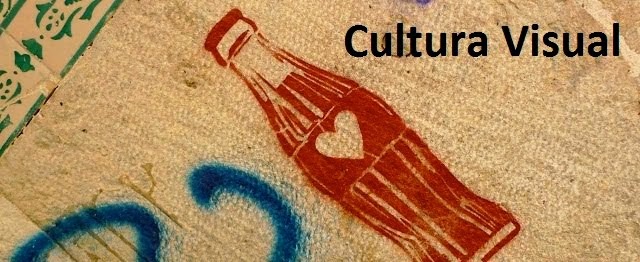Cultura Visual
14 janeiro 2015
Diana V.
Almeida
Duração: 2h (30m tolerância) // Consulta de
material escrito e impresso
Cotação = 200 // I = 45 + II = 70 + III = 75 +
Componente formal (correção, estruturação textual) = 10
I
“Just
looking is just hunting, but it is not quite right to say it is only hunting. There is also something
quietly hypnotic about just looking, something less like hunting and more like
dreaming. (…)
So
just looking is like hunting or being hunted, but it is also kin to hypnosis,
nightmares, and dreams. Those meanings draw near to yet another, because there
is also a deep parallel between looking and loving. Sometimes, falling in love
really feels like falling, as if you have no control (…). On other occasions
love is all a calculated pursuit. Some people spend their lives searching like
detectives among all the faces and bodies they can find. (…) But as lovers say,
it’s not always so easy to know who catches whom, and looking happens in both
directions. There might be a good definition of love here: love as the moment
when the prey becomes another hunter, so that both people are hunters and
hunted at once. (…)
It’s
strange that love stories begin to fill my mind when I meant to think only
about looking, and that is what I want to say about that phrase ‘just looking.’
It is not possible; there is no such moment. All seeing is heated. It must
always involve force and desire and intent. (…) It doesn’t matter what I’m
looking at (…); ‘just looking’ is a lie. I am always looking out, looking for, even just looking around.
(…) There is no looking that is not also directed at something, aimed at some
purpose. Looking is looking at or for or just away. Everything that the eye falls on has some momentary interest
and possible use. (…)
When
I say, ‘Just looking,’ I mean I am searching, I have my ‘eye out’ for
something. Looking is hoping, desiring, never just taking in light, never
merely collecting patterns and data. Looking is possessing or the desire to
possess—we eat food, we own objects, and we ‘possess’ bodies—and there is no
looking without thoughts of using, possessing, repossessing, owning, fixing,
appropriating, keeping, remembering and commemorating, cherishing, borrowing,
and stealing. I cannot look at anything—any
object, any person—without the shadow of the thought of possessing that thing.
Those appetites don’t just accompany looking, they are looking itself.”
Elkins, James. The
Object Stares Back: On the Nature of Seeing. San Diego: Harcourt, 1997. 20-22.
Comente
o excerto acima apresentado, refletindo sobre a complexidade do conceito de
visão.
II
“One
way of thinking about our times is that we are enacting a wonderful success
story. Economic and technological development has made many aspects of our
lives easier. If we’re looking at how to move forward, the path this story
suggests is ‘more of the same, please.’ We’re calling this story Business as
Usual.
This
is the story told by most mainstream policy makers and corporate leaders. Their
view is that economies can, and must, continue to grow. Even in the face of
economic downturns and periods of recession, the dominant assumption is that it
won’t be long before things pick up again. (…)
For
a market economy to grow, it needs to increase sales. That means encouraging us
to buy, and consume, more than we already do. Advertising plays a key role in
stimulating consumption, and increasingly children are targeted as a way of
boosting each household’s appetite for goods [namely through television
commercials]. (…) As we grow up, we learn by watching others. Our views of the
world about what’s normal and necessary are shaped by what we see.
When
you’re living in the middle of this story, it’s easy to think of it as just the
way things are. Young people may be told there is no alternative but to find
their place in this scheme of things. Getting ahead is presented as the main
plot, supported by the subplots of finding a partner, fending for your family,
looking good, and buying stuff. In this view of life, the problems of the world
are seen as far away and irrelevant to the dramas of our personal lives.”
Macy, Joanna e Chris Johnstone. Active Hope: How to Face the Mess We’re in
without Going Crazy. Novato: New World Library, 2012, 15.
Comente
o papel das indústrias publicitárias no sistema neoliberal e aponte alguns dos
impactos deste sistema no mundo contemporâneo. Recorrendo a (pelo menos) um
post do blogue da cadeira (que não tenha sido da sua autoria nem por si
comentado), indique modos/áreas
de ativismo disponíveis para a consolidação de modelos de desenvolvimento
alternativos.
III
Analise
esta imagem da campanha “Unemployee of the Year”, lançada pela Bennetton para
promover a sua coleção outono-inverno de 2012. Tenha em conta, entre outros
elementos que considerar relevantes: i) o contexto socioeconómico
contemporâneo; ii) o texto verbal [Michaela, 29, non-photographer from Czech
Republic. Angel, 28, non-industrial engineer from Spain. Katerina, 30,
non-manager from Greece. Eno, 28, non-actor from the US. Unemployee of the
Year. Call for Entries at the Unhatefoundation.org. United Colors of Bennetton.
4 of the nearly 100 million people under 30 years of age in search of a job.
Tell us about your non-work experience. Enter the Unemployee of the Year
contest with your project or vote for the one that inspires you: 100 of them
will be supported. #UNHATE]; iii) o texto visual (e suas estratégias
composicionais); iii) a interação entre ambos.


Sem comentários:
Enviar um comentário